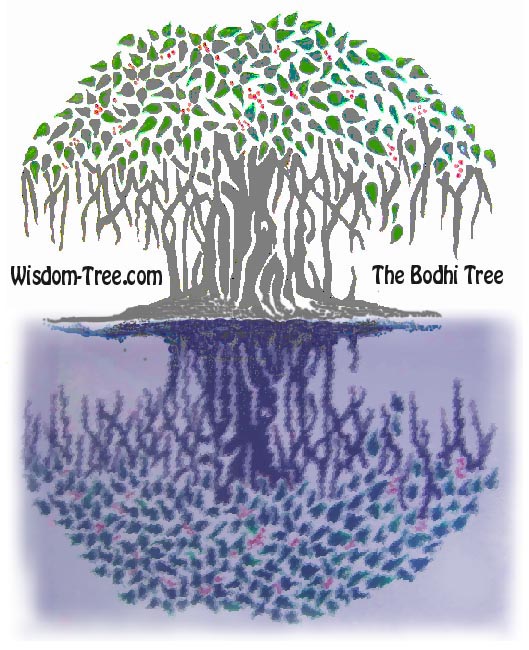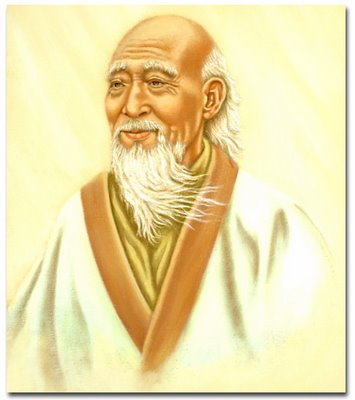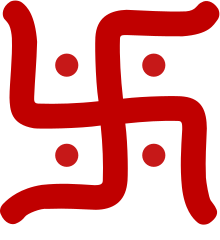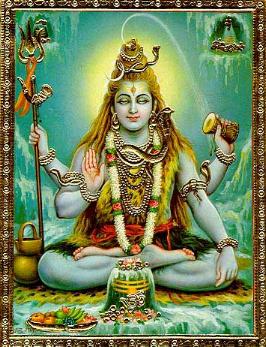Eatern Approaches to Ultimate Reality
Buddhism
Symbols
The Wheel of Dharma - the Buddha's teaching of the path to Nirvana

The Bodhi Tree - The tree where The Buddha sat under to achieve enlightenment.
The Meaning of Life
You must achieve Nirvana, the end of all change (The Ultimate Reality) to end all suffering
Upon reaching Nirvana, one is released from all bonds. (suffering, ego, desire etc...)
Ultimate Reality
There are two main forms of Buddhism. There is a conservative branch which claims to have guarded the unaltered message of its founder which is that there is neither a personal god, nor a spiritual or material substance that exists by itself as Ultimate Reality.
The Liberal branch of Buddhism believes that Ultimate Reality is also an ultimate truth which is called the truth of emptiness. They say that emptiness is a quality that is attached to all physical, mental or doctrinal concepts. It is the basis of our world, not as a substance, but as a truth.
Ultimate Reality is known as Nirvana. It is the end of all change, where everything is in its perfect form.
Relationship between Mind and Matter
A Buddhist's Goal is to achieve Nirvana.
To achieve this, he/she must disconnect both their mind and body from the world. They must become fully awakened, which means sexual abstinence as well as the refrainment of substances that cause mindlessness.
Buddhists will meditate to attempt to completely disconnect their bodies and minds from the world
Buddhists believe that the world must be viewed as a web of interdependent and baseless phenomena
Key Figures

Historically, the Buddha is the founder of Buddhism, but to Buddhists, he is considered the person who rediscovered the teachings after they died.
I will teach you the Truth and the Path leading to the Truth. (Buddha)
The Self
An Individual is Made of Five forms of Existance
The Body
Physical (touch, taste, smell, etc... and Emotional sensations (love, heartbroken, hope etc....)
Perception of Thinking (ie cognition and reasoning)
Mental Formations (ie personality, habits, thoughts, opinions)
Conciousness, the connection and sense to ones surroundings
Texts
The world exists because of causal actions, all things are produced by causal actions and all beings are governed and bound by causal actions. They are fixed like the rolling wheel of a cart, fixed by the pin of its axle shaft. (Sutta-Nipata 654)
Taoism
Symbols

Yin Yang - The unity of opposites
Ultimate Reality
Taoism is the path to unify one's self with the Ultimate Reality
Taoism states an impersonal Ultimate Reality called the Tao that is both the creator principle and the eternal truth of universe. It is unchanging principle that is the basis of multiplicity and the impulse that generates all forms of life.
Key Figures

Lao Tzu (Laozi) is traditionally described as the founder of Taoism (over 2500 years ago)
The Meaning of Life
A Taoist will not seek to improve Nature's Perfection
Wu Wei: An important concept in Taoism that literally means non-action or non-doing. It is a concept which directs believers not to do or make complicated decisions until a need for such act arises.
The Relationship between Mind and Matter
Taoists suppress their appetites, emotions and urges to become one with Tao. They lose touch of "The Ten thousand things"
The Self
A Taoist will detach him/herself from the world to become unified with Tao. They do this by supressing their emotions as well as physical needs. (i.e eating, sleeping etc...)
Texts
There was something undifferentiated and yet complete, Which existed before heaven and earth. Soundless and formless, it depends on nothing and does not change. It operates everywhere and is free from danger. It may be considered the mother of the universe. I do not know its name; I call it Tao. (Tao-te Ching 25)
Confucianism
Symbols

The Water ideogram, meaning life
Meaning of Life
Confucians achieve enlightenment through the revitalisation of virtue.
There are five main virtues which are Wisdom, Love, Duty, Propriety and Truth.
Confucians believe in action to become virtuous
Ultimate Reality
Confucians don't necessarily seek an "Ultimate Reality". They do however focus on a more practical and ethical life.
The focus of life is on the past, to learn from mistakes and achievements, and the present.
They focus on Natural goodness as a way to get into heaven
The Relationship between Mind and Matter
Confucians believe that the Physical world is where one must obtain virtue.
Key figures
One of the founders, Confucius, found an ethical system in order to harmonize social relations in the Chinese state. Confucius gave ethical interpretations of other religions. The supreme principle in the universe according to him is the moral law.
Confucius, Mencius, and Xunizu founded Confucianism

Confucius
Texts
There is no place in the highest heavens above or in the deepest waters below where the moral law is not to be found. (Doctrine of the Mean 12)
Hinduism
Symbols

The Swastika -The word swastika came from the Sanskrit word svastika, meaning any lucky or auspicious object

The Om represents spiritual perfection within yourself. Its meaning is that of absolute knowledge and it encompasses all of creation.
Ultimate Reality
The Ultimate Reality in Hindu Faith is know as Brahman
It is the dismissal or rejection of the physical world. It does not contain the natural cycle of life and death.
Hinduism is not a unitary religion. In contains multiple religious and philosophical trends including henotheism, pantheism, and dualism
Henotheism – The belief that multiple Gods exist
Pantheism – A religious belief or philosophical doctrine that identifies God with the universe.
Dualism – The perspective of two ultimate realities
The Relationship Between Mind and Matter
Brahman is everything. The physical world is not the true world.
Hindus spend their lives trying to free their minds from the physical world
They learn the truth through Meditation and scriptures
The Meaning of Life
The goal in life is to seek the truth by disconnecting their minds from the physical world, and becoming one with the Ultimate reality known as Brahman.
All paths to Brahman are accepted. Damnation to Hell does not exist. Some of these paths include Monism or Dualism
Self-realization is achieved when one breaks from the cycle of life and death.
Key Figures

A key figure in Hinduism is Shankara. He re-established the authority of Vedic texts throughout India by traveling widely to defeat Buddhists and other members of the Nastika movement.

A representative of Kashmiri Shaivism and is perhaps its most prolific writer
Texts
"Supreme Lord, let there be peace in the sky and in the atmosphere. Let there be peace in the plant world and in the forests. Let the cosmic powers be peaceful. Let the Brahman, the true essence and source of life, be peaceful. Let there be undiluted and fulfilling peace everywhere" – Prayer from the Atharva Veda, one of Hinduism’s most sacred texts.
